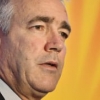Will oil peak within 5 years?
On November 2 Simon Henry, the chief financial officer of Royal Dutch Shell and one of the most respected figures in the industry, told analysts on a conference call for the Shell results presentation that he believed “oil demand will peak before supply and that peak may be between five and 15 years hence”.
On November 2 Simon Henry, the chief financial officer of Royal Dutch Shell and one of the most respected figures in the industry, told analysts on a conference call for the Shell results presentation that he believed “oil demand will peak before supply and that peak may be between five and 15 years hence”. I think he is right, and that the peak of demand will come within five years and possibly by 2020. The reasons for what sounds like a very radical challenge to the conventional wisdom are clear and the advance warning signs are already evident in the data.
Oil demand in the developed OECD world has already peaked and is 9 per cent below the level reached in 2005. In Europe, oil demand is down 17 per cent over the same period.
After a surge in Chinese demand over the past decade – particularly during the years of rapid growth and industrialisation – it has become obvious that demand there has flattened off. Some of the oil imported over the last two years has been re-exported, and more has gone into strategic stock piles – a prudent measure when prices are low but not something that can continue. Demand is still growing in India and Turkey but the volumes involved are relatively small.
All the indications are that in the developed world demand has further to fall. Oil use is now heavily concentrated in the transport sector. Electric vehicles have only a fractional share of the market but the numbers are growing month by month. Technology is improving, reducing costs and expanding sales. Tesla gets most of the publicity but those wanting to understand the impact of EVs on the oil market should look at China where 188,000 new electric and hybrid vehicles were sold in 2015. This year that number is expected to more than double to around 450,000.
The technology improvements will continue but I believe the next big step will be a regulatory drive to make EVs the default choice for motorists in cities. Measures such as lower vehicle taxation, lower congestion charges and easier parking are being used as gentle incentives for behaviour change. But I can see cities in countries such as Germany or China going further and mandating their use – with the shift implemented over a relatively few years. In both countries local production will spur the adoption of new public policies. I will write more about what is happening in Germany in a future post.
Gradually, or perhaps more quickly, EVs will eat into the market currently reserved for petrol.
The conventional wisdom in some of the other oil majors is that this effect will be swamped by the growth in car use in the emerging market economies of Asia and Latin America. But that misses the phenomenon of leapfrogging. As EVs proliferate, their costs will fall until they are the natural purchase everywhere. Urban air quality is a big social issue in most developing countries, and once a viable alternative to petrol is available the shift could come quickly. Perhaps the internal combustion engine can match the falling costs and reduced pollution but it would be foolish to take that for granted. In addition, the new EV industry centred in places such as Germany and China will have every incentive to compete internationally.
What are the implications if Mr Henry’s forecast is correct and oil demand peaks by the early 2020s at about 100m barrels a day?
First, it is important to be realistic. A peak is likely to become a plateau rather than a sharp decline. The global capital stock of conventional vehicles will turn over only slowly. Demand could remain flat for another five or 10 years with reductions in the developed world matched by growth in Asia and elsewhere. But the coming of the peak will create incentives among producers – public and private. Companies will have to plan not just for low prices but also for low demand. Of course, they can adapt and if necessary cut back exploration and new development work ; many have already begun that process in response to the immediate challenge of low prices. Companies can also diversify into gas and other forms of energy including renewables, as Total, for example, is already doing. Others will wait but will come under pressure from shareholders not to delay too long and not to waste money chasing a shrinking business.
The biggest challenge of the peak and plateau will face producing countries, especially those that have failed to diversify their economies, such as Russia, Nigeria, Algeria, Venezuela and, of course, Saudi Arabia. Some have such a low production cost base that they should be able to keep their market share. But with the prospect of a decline in oil use in mind many will want to maximise production quickly to extract as much revenue as possible as soon as they can. In a declining market the expectation will be that prices will stay low or fall further, removing any remaining incentive to keep oil in the ground.
The 20th century was the age of oil. The 21st will not be and the adjustment process for those involved could be very disruptive – destroying rentier economies built on oil revenues, changing the pattern of trade and adding another challenge to unstable and dangerous parts of the world.
Nick Butler

